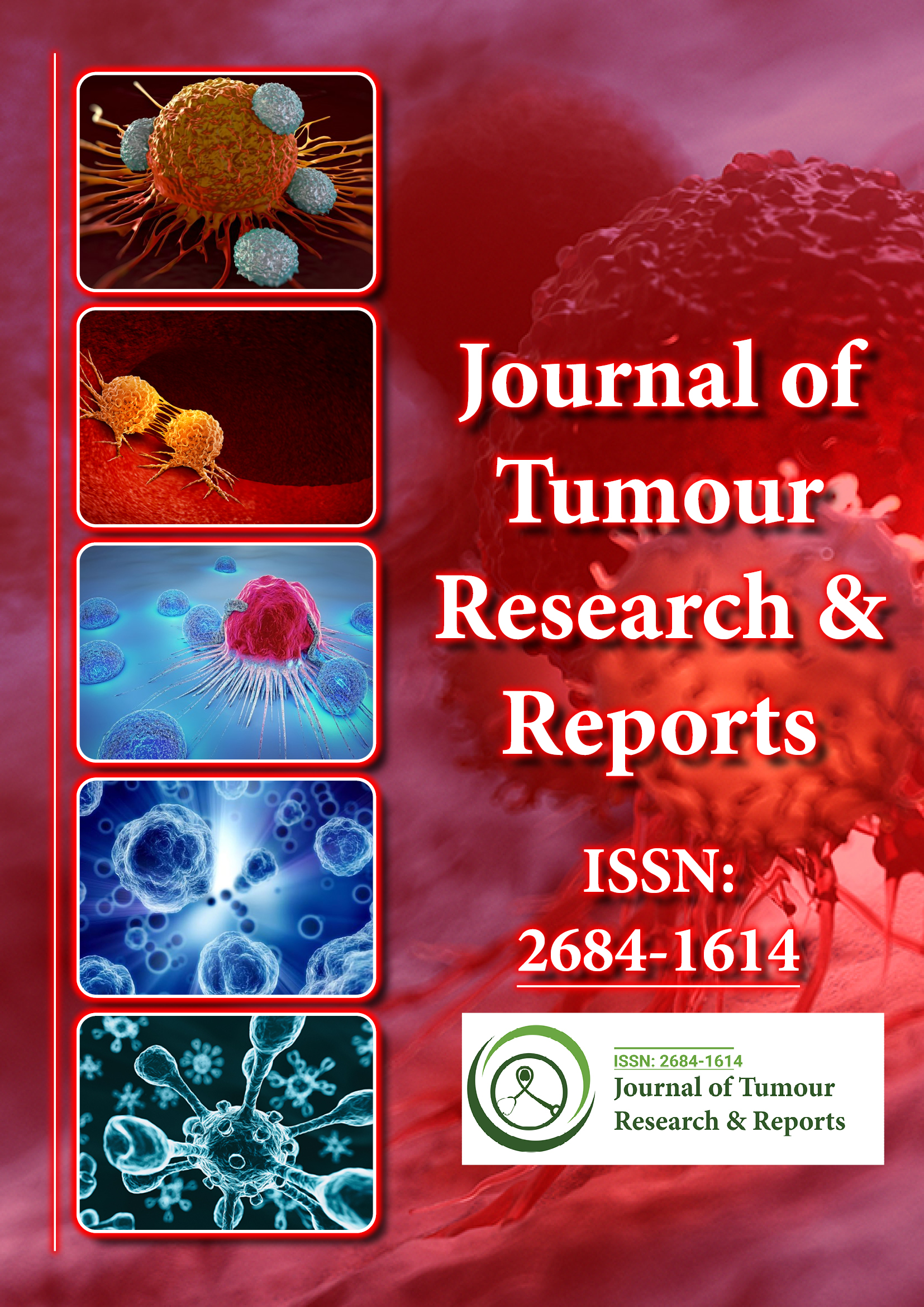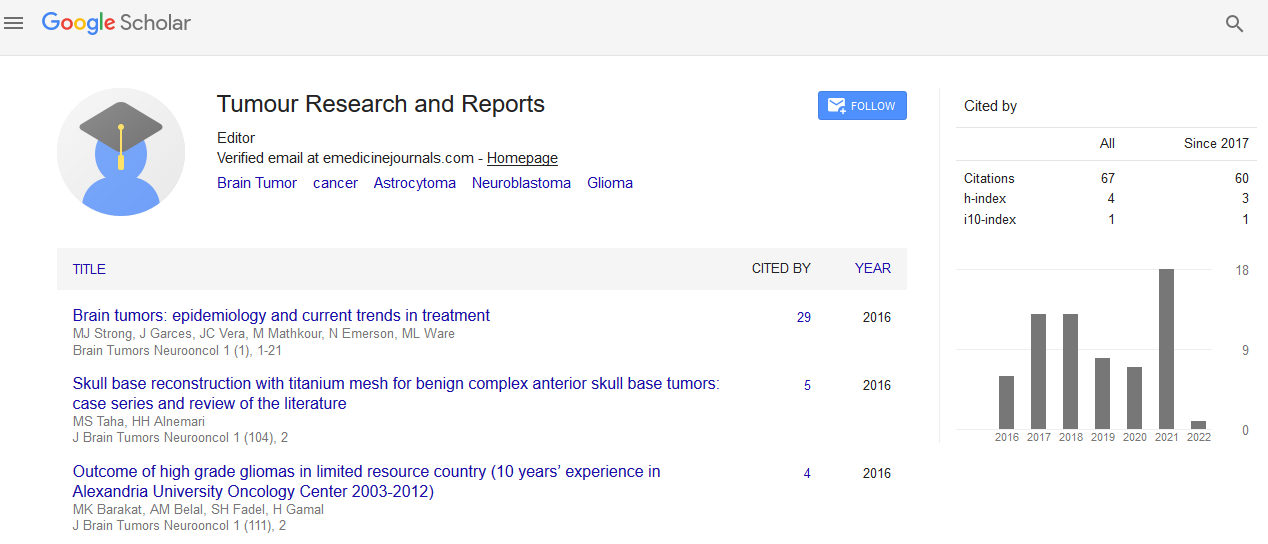Indexed In
- RefSeek
- Hamdard University
- EBSCO A-Z
- Google Scholar
Useful Links
Share This Page
Journal Flyer

Open Access Journals
- Agri and Aquaculture
- Biochemistry
- Bioinformatics & Systems Biology
- Business & Management
- Chemistry
- Clinical Sciences
- Engineering
- Food & Nutrition
- General Science
- Genetics & Molecular Biology
- Immunology & Microbiology
- Medical Sciences
- Neuroscience & Psychology
- Nursing & Health Care
- Pharmaceutical Sciences
Commentary Article - (2024) Volume 9, Issue 3
Impact of Thyroiditis and Intraoperative Management of Papillary Thyroid Cancer
Tanaz John*Received: 30-Aug-2024, Manuscript No. JTRR-24-27821; Editor assigned: 02-Sep-2024, Pre QC No. JTRR-24-27821; Reviewed: 16-Sep-2024, QC No. JTRR-24-27821; Revised: 23-Sep-2024, Manuscript No. JTRR-24-27821; Published: 30-Oct-2024, DOI: 10.35248/2684-1614.24.9.235
Description
Thyroid cancer is one of the most prevalent cancers in endocrine tissues, with Papillary Thyroid Cancer (PTC) being the most common type. Its incidence has been steadily rising over the past few decades, which is partly due to improved diagnostic methods such as ultrasound and fine needle aspiration biopsy. PTC is often treated with surgery, usually a total thyroidectomy or lobectomy, followed by radioactive iodine therapy for any residual cancer. However, when thyroiditis, particularly Hashimoto’s Thyroiditis (HT), coexists with PTC, the intraoperative and postoperative management of the disease becomes more complex. This article delves into the impact of thyroiditis on PTC, specifically in terms of surgical challenges and intraoperative management.
Hashimoto’s thyroiditis, a chronic autoimmune condition, is marked by inflammation of the thyroid gland, leading to hypothyroidism. There is growing evidence that HT and PTC often coexist in the same patient. Studies show that patients with Hashimoto's thyroiditis have a higher incidence of papillary thyroid carcinoma compared to the general population. The exact mechanism underlying this association is not fully understood, but it is believed that the chronic inflammation in HT may stimulate the thyroid cells, leading to mutations and increased cancerous changes. Additionally, autoimmune processes may contribute to the development of PTC, although the role of inflammation in cancer progression remains under study.
While HT is a well-known risk factor for PTC, the presence of thyroiditis can complicate the management of the cancer, particularly during surgery. Thyroiditis affects the thyroid’s consistency, often making it more firm or fibrotic. This increases the difficulty of surgical dissection and may result in higher complication rates, including damage to adjacent structures like the parathyroid glands and recurrent laryngeal nerves.
Surgical resection is the primary treatment for papillary thyroid cancer, but when combined with thyroiditis, the surgical procedure can become significantly more complicated. The inflamed thyroid gland becomes less pliable, making it harder to distinguish cancerous tissue from benign tissue. The thyroid gland in thyroiditis is often adherent to surrounding structures, which complicates the dissection process. Surgeons may face difficulties in identifying the correct planes of dissection, increasing the risk of injury to vital structures such as the recurrent laryngeal nerve or parathyroid glands. In addition, the altered texture of the gland can make it difficult to fully remove all malignant tissue, which may affect the long-term prognosis.
One significant concern when dealing with thyroiditis during PTC surgery is the management of lymph node involvement. Thyroiditis can lead to an enlarged thyroid and inflammation may cause lymph nodes to become more difficult to distinguish from surrounding tissues. The presence of thyroiditis may make the identification of involved lymph nodes more challenging, potentially leading to incomplete staging or inadequate removal of metastatic tissue. Surgeons must rely on preoperative imaging, careful intraoperative evaluation and sometimes frozen section biopsies to determine if lymph nodes are involved.
Moreover, after thyroidectomy, patients with HT may face unique challenges related to their hypothyroid state. Postoperative management of hypothyroidism in these patients is critical, especially since the suppression of Thyroid-Stimulating Hormone (TSH) is a key component of reducing recurrence risk in PTC patients. Thyroid hormone replacement therapy must be carefully tailored to avoid exacerbating the underlying autoimmune disease, which could lead to further complications.
Conclusion
The combination of thyroiditis and papillary thyroid cancer presents a unique set of challenges for both diagnosis and management. While the coexistence of these two conditions may not alter the overall treatment approach significantly, it requires heightened awareness of the potential surgical difficulties and the need for precise intraoperative management. Surgeons must be prepared for the complexities of tissue dissection in patients with thyroiditis, ensuring that the cancerous tissue is thoroughly excised while avoiding damage to surrounding structures. Furthermore, postoperative care must be adjusted to address the thyroiditis-induced hypothyroidism, ensuring that the patient receives appropriate thyroid hormone therapy to prevent recurrence and promote long-term recovery. Given the rising prevalence of both conditions, understanding the interplay between thyroiditis and papillary thyroid cancer is essential for optimizing patient outcomes.
Citation: John T (2024). Impact of Thyroiditis and Intraoperative Management of Papillary Thyroid Cancer. J Tum Res Reports. 9:235.
Copyright: © 2024 John T. This is an open access article distributed under the terms of the Creative Commons Attribution License, which permits unrestricted use, distribution, and reproduction in any medium, provided the original author and source are credited.

